This year’s Earth Day is every day “event” involved a trip to the Sustainable Fashion Forum in Austin to get some education.
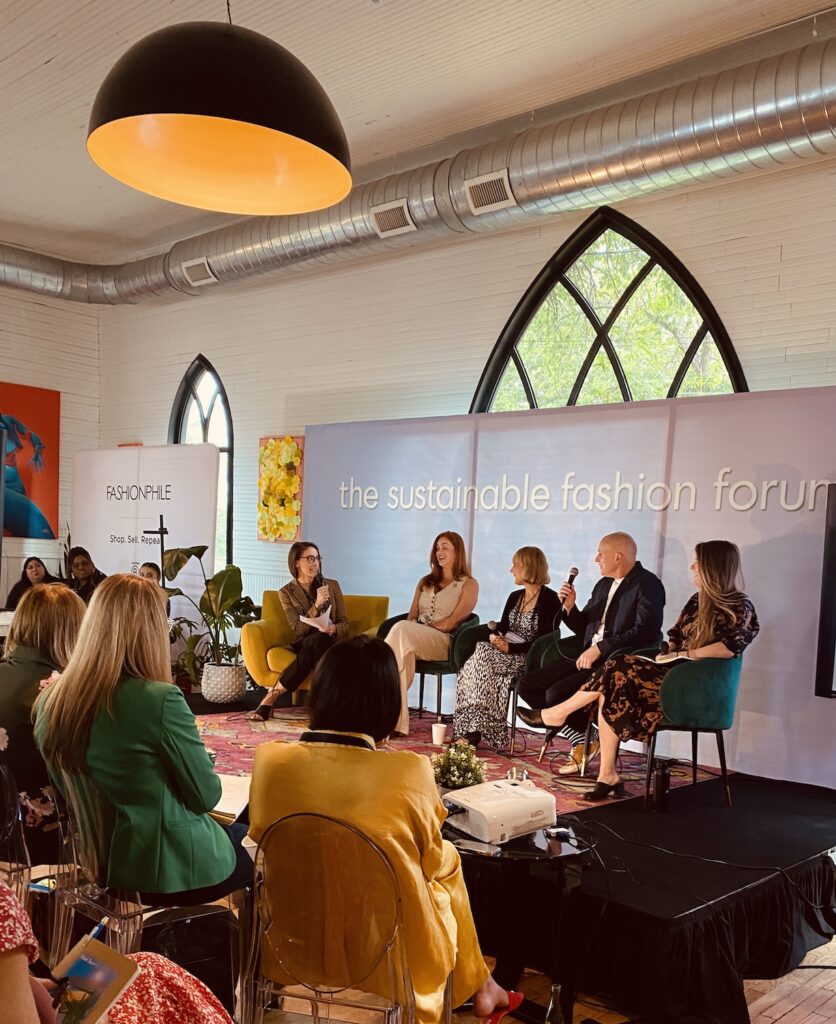
It was delightful to have attended the SSF last week. I will only touch on the amount of information we absorbed, but if you want to know more about all the speakers click on the SSF link. It was both refreshing and enlightening to hear from industry leaders championing sustainability throughout their respective areas of the industry.
Some takeaways, the industry understands the dire need to stop shopping and producing similarly, but the consumer still lacks the value system. We do not want to shame the consumer into buying better or not at all, leading with wholesome content, i.e. the future is mending, etc., but create self-actualization for the better health of our planet and ourselves.
The correlation between the two is that we have two homes: Earth and Our Bodies. Comparing fast fashion to fast food, neither one is good for either.
We all need similar value systems to collaborate, innovate, and legislate. All who may not have the same product but are still value-driven to collaborate by the three P’S PEOPLE, PLANET, AND PROFIT in that order. Everyone must collaborate more even if it’s with direct competitors.
Another significant theme is wearing second-hand clothes. Most panelists and attendees, including myself, wore second-hand clothing. I was wearing my own SBD upcycle clothing, and my daughter was wearing thrifted pants and her hand-knitted T-shirt, too. The resale of a garment has become a metric for designers.The second-hand trend was strong throughout, and Gen Z was the main driver. The few men that were there, were about the only ones wearing bought-new clothes.
The Tell-All Tag again was mentioned. We need a tag on every garment to know where and how it was made. This is a design metric for whom it will serve in its second life and ultimately be recycled into new fiber.
The representative from eBay talked about the second-hand market, having a stake in better-made clothing.
There were innovators of all kinds, some with apps. One uses AI to find secondhand clothing. The Bemi app is an extension on your browser that will pop up with the second-hand version of whatever you shop for.
I’ve tried Bemi , and it’s fun. I stared at my favorite Gap Site, seeing replacements for the baggy pants I was looking at, deciding if they were as fashion-forward as the ones I was shopping for, but it diverted my attention enough not to buy anything. The person promoting Bemi had buttons—I wear thrifted clothes. I can not wear one because SBD clothes are all made from plentiful donations by individuals and not thrifted as so many assume.

Mend-It is another app where you can find local people to mend your clothing. The Mend-It founder wants to help fledgling tailor shops nationwide who are going out of business to save their skills and business by using them again to repair and make our clothes more custom. I was invited to join their registry. Many companies like this are popping up all over. One in L.A., Circular LA, will take a bag of your clothes through the mail and upcycle them. Repair and dye pieces. More are in the works, like FIXR.
Take-back programs are in almost every country and every Label has one to better dispose of the end product. Companies from Eileen Fisher, Nordstroms, and many more discussed how virtually all participate in a take-back program. Regardless of the garment’s age, Eileen Fisher will take back any garment and pay five dollars per piece. Eileen Fisher’s program, Renew, is upcycling or recycling their clothes and has been around since 1983. They are at the forefront of trying to produce better. The next most popular one is Patagonia.
Nordstrom has always had an excellent return policy and still does but to a different end. They will mend anything, as they have always had great customer service perks. But now returns are up to 40% from 5-10% in the past. The same goes for manufacturers overall as a result of purchasing online. By the way, Amazon is the world’s largest online clothing seller, with 412 billion in sales.
These people are showing up looking for real solutions. Businesses are frustrated with the piecemeal of certifications. The people working on the front lines of garment manufacturing are working with legislators in the US to help develop better policies for a more ethical circular system.
Regulations formed by the Fabric Act now before Congress in the U.S. are essential but sometimes not nuanced enough for collaborations and innovations. Generalizations can hurt collaborations and innovations by adhering to specific certifications and having to get all of them in place before working together. Developing countries have mores not consistent with first world countries, especially when women’s work is not valued the same. The main one is to have better production practices, usually in the form of better pay or penalties.
Companies are on board, working with sustainability teams that include nonprofits, chemists, geologists, environmentalists, lawyers and agricultural experts. Many present, from fashion academics to sustainability legislative lawyers. People from the Gap, Everlane, Rebrand, Supima, eBay, FIT, Etsy, etc. One former Ann Taylor employee who showed up in a van turned to farm-to-table work.
Virtually every company is conducting R and D about how to solve the problem behind the scenes, if not in its marketing. These companies are meeting with legislators to do the best thing. The manufacturers understand, but their customers are not there yet.
Language is a problem. Sustainability has become a word no one understands. Some industry spokesman thinks we should say Remanufacturing instead.
The luxury market likes the term pre-loved for its second-hand market or anything but sustainable.
How do we educate the customer who only cares about price point?
Make being sustainable the emotional reason for buying; think first, buy second. Style sustainability for looking good is between price and cost per wear. More of what customers want number one style, number two comfort, number three quality, and number four longevity. Encourage self-actualization connection to value.
In the US, we are slow to ban fast fashion. France and the EU have tariffs on clothes that are over twice the cost of the garments to discourage shoppers from buying and big companies like Shien from selling. However, we still do not know the values necessary to progress in the US.
In the Global North, especially in the U.S.. Goodwill sends the massive excess it receives to the Global South, because of agreements like the Botswana Kenya Trade Agreement, where the landfills are spilling into the rivers and oceans. Fashion industry innovators are working on many solutions to figure out what to do with all the clothes filling up the planet, which takes time and money.
If innovation is to happen, we need longer lead times to production. Manufacturers are discussing the need to plan a year or two in advance to develop better materials. Forty years ago, when I was starting out, we worked on seasons one to two years in advance. Unlike today, clothing is acquired within two weeks in many cases.
The chemists working on materials and recycling fabrics need time and cooperation from the government, farmers and the factory. There is a worldwide need for more grants and tax benefits. Fibers from agri waste create 66-80% of the raw material for potential fabric innovations. Some companies are going bankrupt…developing materials. Adopt tex mills making more government facilities.
We are reminded that most of our clothing is made with plants or animals.
Leather, anything, should be cherished and passed down forever because new leather is not sustainable.
No one wants fake leather, but we have to since leather kills rainforests rapidly, and tanneries kill people directly. By the billions, cows die for their leather. We all love leather, but it is not sustainable. Tell that to Mexico.
Like new fur, it can not be practiced anymore because of its cruelty. Fur is dead from the Human Society. It’s easy to say, but the cruelty directly affects us. Half of the little fur-farmed animals contracted COVID-19. They are breeding grounds for human-transmitted diseases or pandemic-type viruses. Even kangaroo leather, thought to be a win win for over population became a PR nightmare after finding so many joeys in their pouches slaughtered.
No one wants to have a copy fabric. No one. But we have no choice.
Cotton is the most used plant material in clothing, about 40%. Polyester, nylon, acrylic, and other synthetic fibers—all of which are forms of plastic—now make up over 50% of the material used to make clothes worldwide.
To this day, cotton is still grown on a farm. The CEO of the non-profit Supima does not control any manufacturing; it is like quality control for all the cotton in the states and the world. He sees farmers as having one thing on their minds: to survive and keep their legacy of generational farming going.
Some changes such as wanting to change the GPS tractors away from going over the same tracks year after year and compacting the soil terribly. Cotton comes from forty countries. Value-driven farming is so related, textile to textile, also with the collaboration of native innovation are making work better.
One new fabric is made from corn or qore, “dent” used for 70% of all lycra. The Global Organic Textile Standard (GOTS) has a clearly defined and transparent set of criteria. GOTS is the worldwide leading textile processing standard for organic fibers, including ecological and social criteria, backed up by independent certification of the entire textile supply chain. GOTS-certified final products may include fiber products, yarns, fabrics, clothes, home textiles, mattresses, personal hygiene products, food contact textiles and more. Another standard to look for is Fairtrade goods.
Greenwashing, the marketing practice of saying they’re doing the right thing but still not paying factories fair costs, might be more marketing jargon than making a real difference. However, it still does some good by addressing the elephant in the room.
Brand authenticity, about manufacturing is just being honest, not Green Hushing, admit where you’re not doing well, think about the long-term trade-off. New degrees in Sustainability, new metrics for scientists and chemists for meeting goals for 2030.
A key takeaway for me was the vital role policy plays in shaping a sustainable future for fashion and retail. The recurring topic mentioned throughout the panels, industry leaders must educate themselves on how policy works and how they can play a role in shaping the outcomes. Many policymakers do not understand the fashion industry, so we must sit at the table when these policies are being discussed.
Another great source about circularity is the Ella McCarthy Foundation’s three principles, driven by design: eliminate waste and pollution, circulate products and materials (at their highest value), and regenerate nature, is a resilient system that is good for business, people, and the environment.
It was both refreshing and enlightening to hear from industry leaders championing sustainability throughout their respective areas of the industry. I am so excited to be part of this pivotal moment in the industry and looking forward with positivity to the hard work ahead!
There is a new documentary out Brandy Hellville & The Cult of Fast Fashion | Official Trailer | HBO
I am dedicated to bring you more information in future blogs or sign up for the newsletter here.
https://www.thesustainablefashionforum.com/speakers
https://thefabricact.org/endorsers
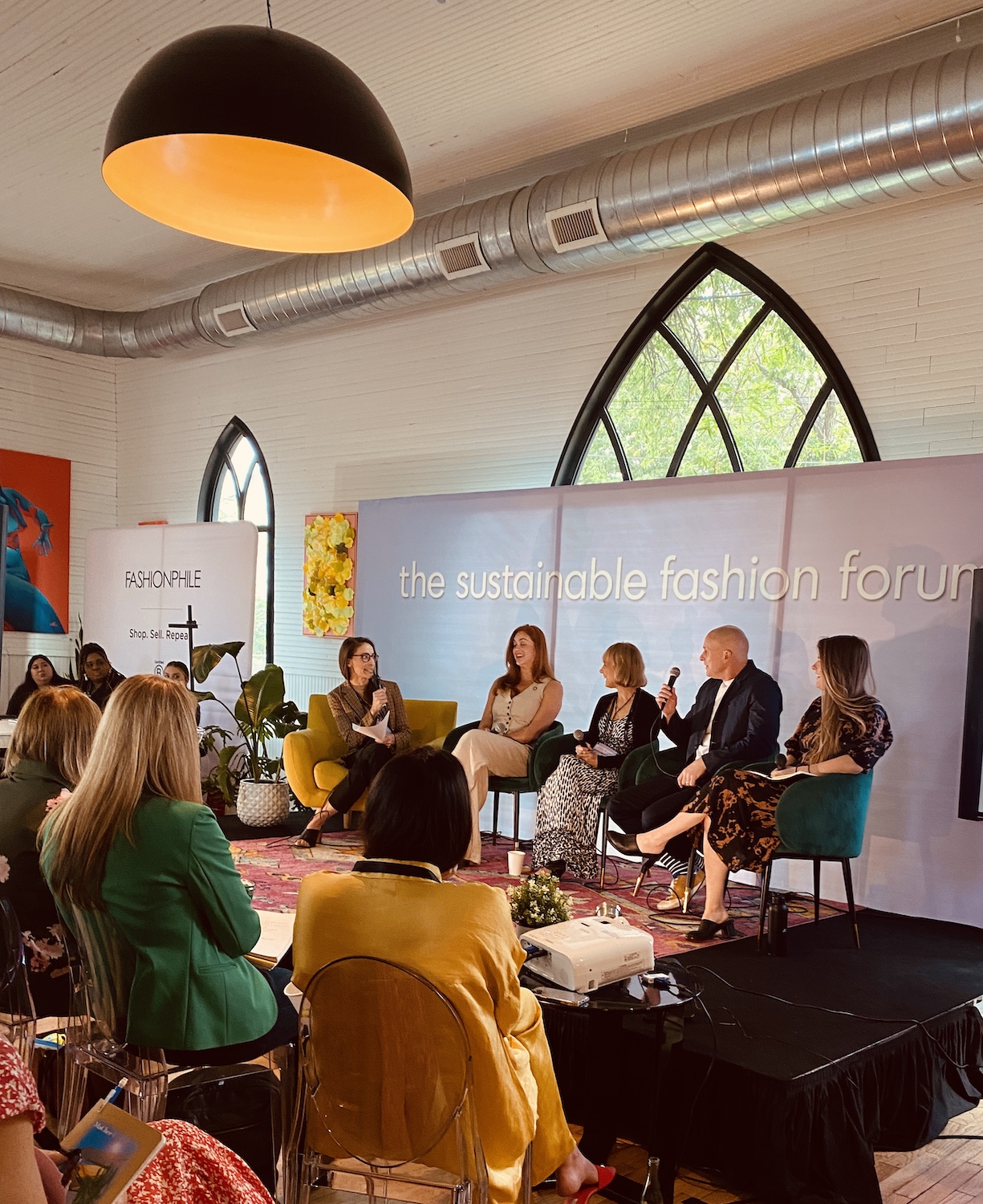
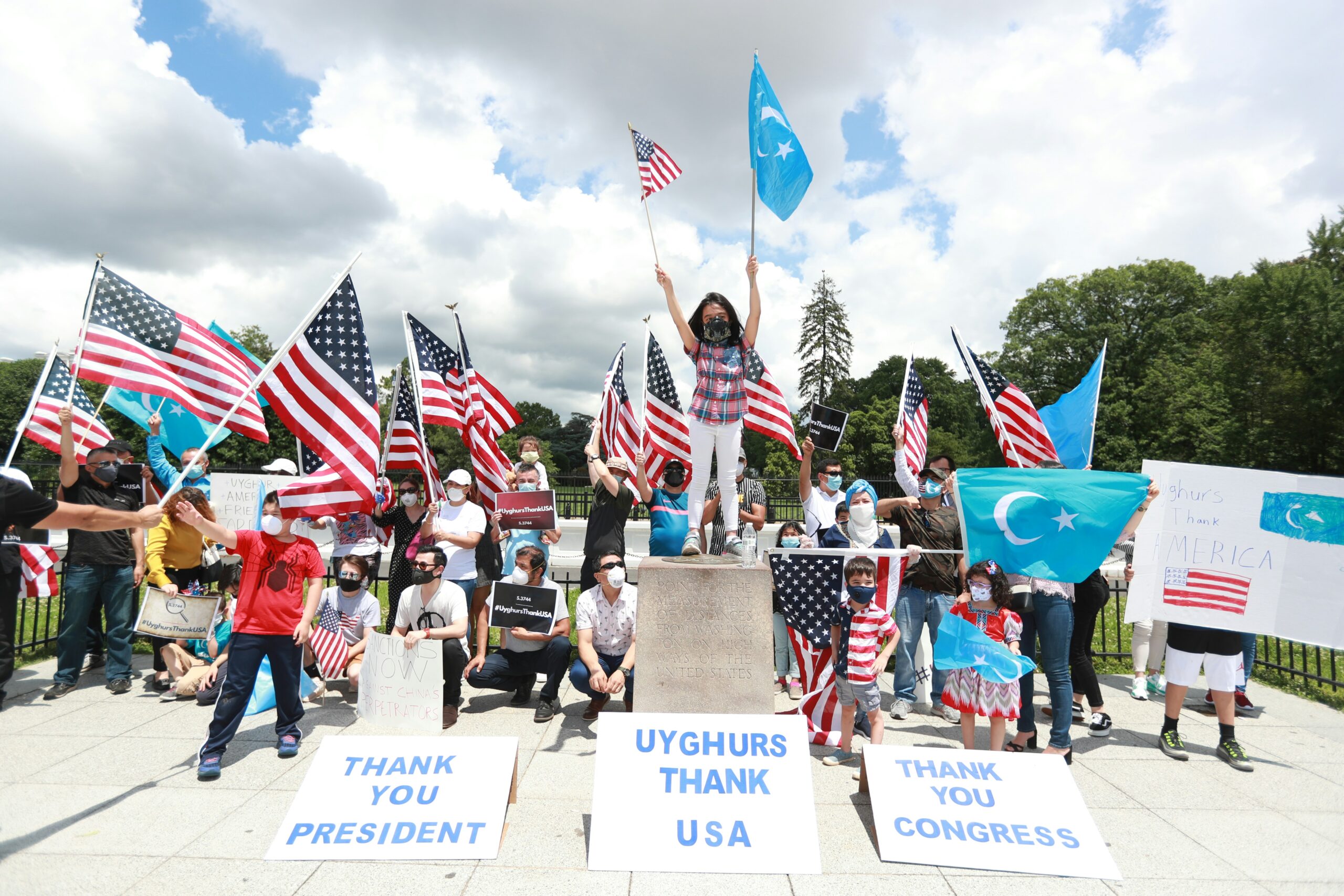
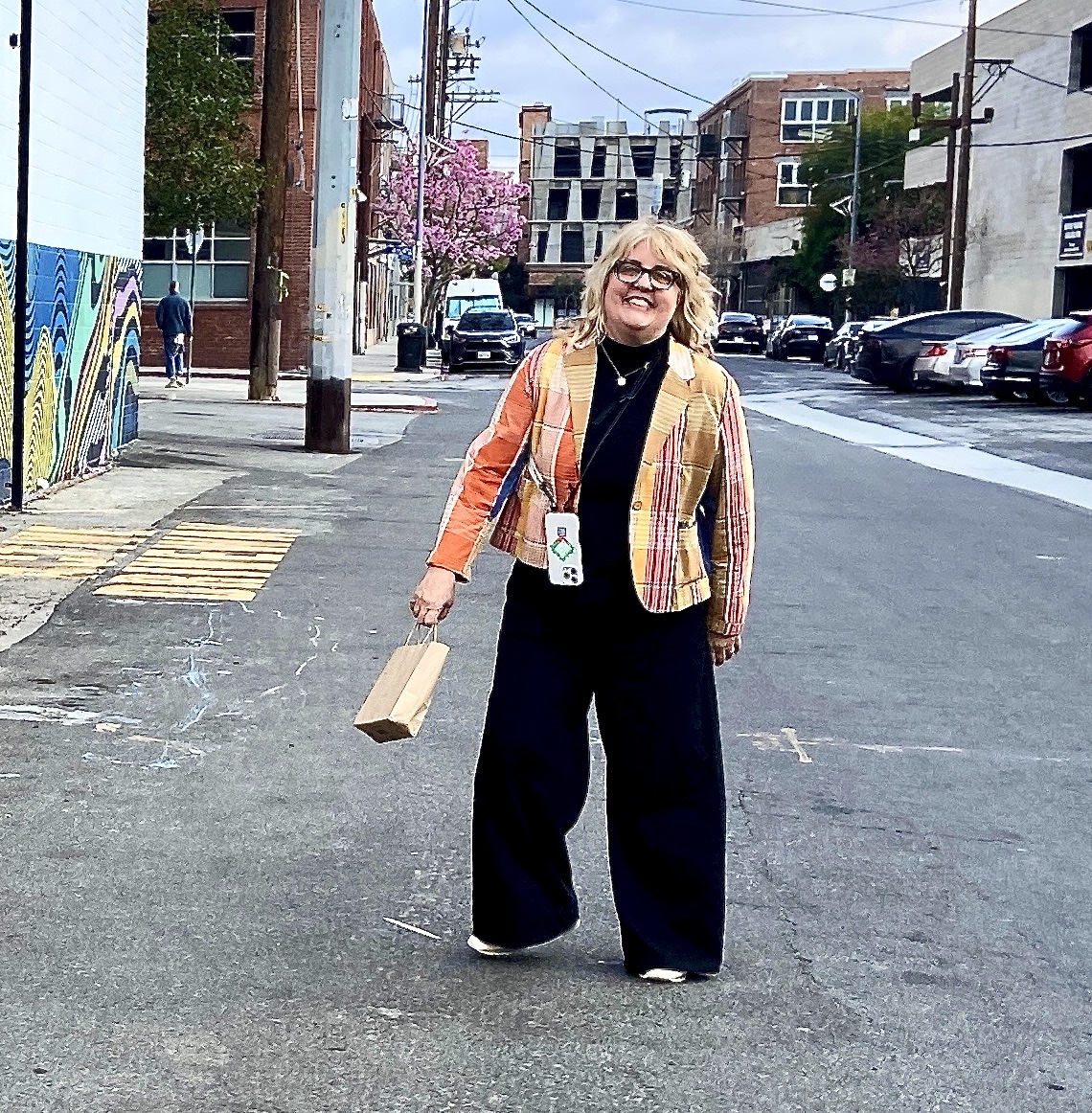
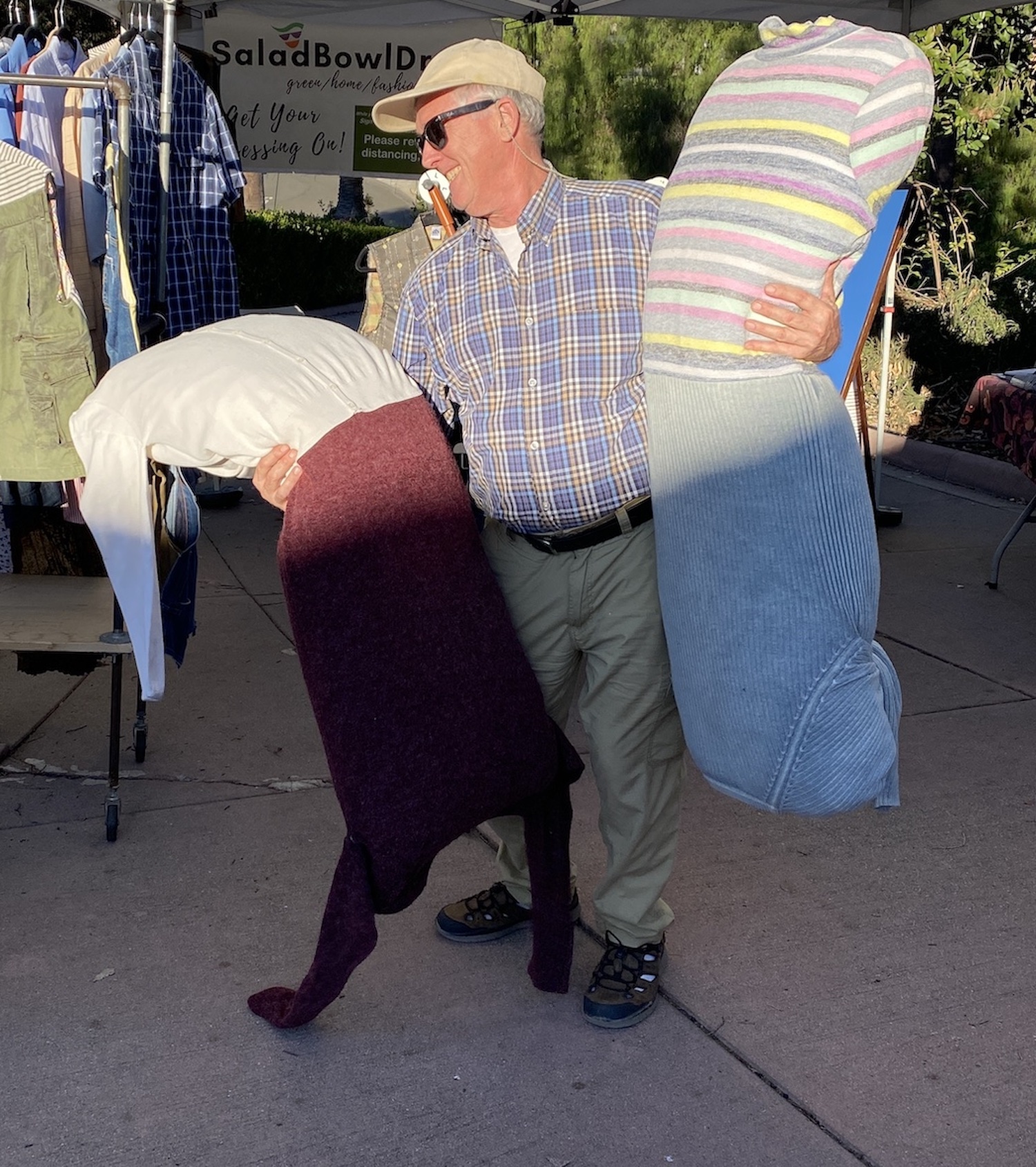

Read the Comments +